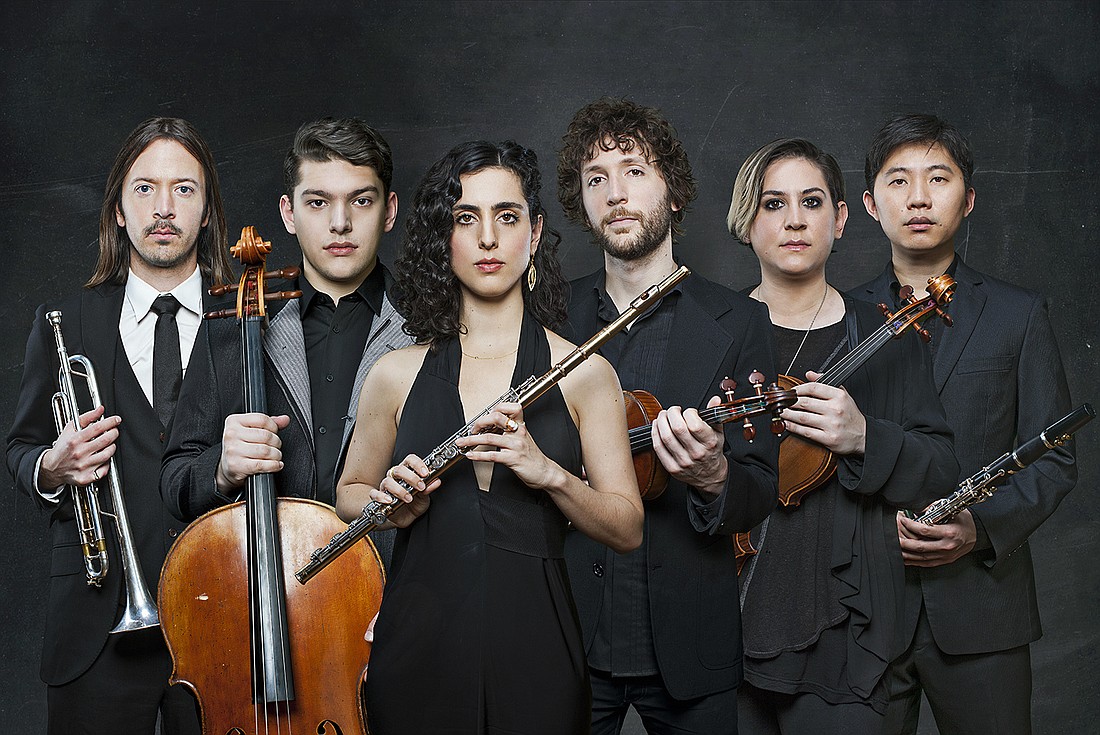- April 17, 2024
-
-
Loading

Loading

The closing weekend of the Sarasota Music Festival gave us a combination of music that was traditional, cutting-edge, and classical cross-over. Quite a mixture, to say the least.
Friday night’s offering presented the greatest contrast, starting with the “Wind Quintet, Opus 10,” of Pavel Haas, written in 1929. Although Haas was Czech and a student of Janacek, at times there were hints of Kurt Weill, his German contemporary.
Mostly serious, except for the “Ballo eccentric” third movement, with piccolo and E-flat clarinet, it was given a thoughtful and moving performance by Carol Wincenc, flute, Stephen Taylor, oboe, Charlie Neidich, clarinet, William Purvis, horn and Frank Morelli, bassoon.
Robert Schumann’s “Piano Quartet in E-flat major,” written during his chamber music year of 1842, wound up being the “oldest” work of the weekend. Written in his full romantic and sweeping style, with a few Mendelssohn-like moments in the scherzo, it was beautifully performed by Jeffrey Kahane, piano, Frank Almond, violin, Barbara Westphal, viola, and Brinton Smith, cello.
The balance of the evening featured yMusic, a chamber group of young performers from New York, in a set of works as different and somewhat perplexing as the makeup of the group itself. The combination of flute, clarinet, trumpet, violin, viola, and cello is far from traditional, and so was their music. The seven works they performed, although by different composers, sounded vaguely alike, with combinations of sounds and effects, usually starting quietly, building to a shattering climax, and ending quietly. More variety would have been welcome, but their appearance gives evidence that the festival is expanding its reach in the experience it provides for both students and audience. It was a musical stretch and not to everyone’s taste, but was an important addition to the festival.
It’s difficult to believe that Samuel Barber’s “Adagio for Strings” (1936) was once considered to be adventurous, with its slow moving themes and resolving dissonant harmonies, but it was. Originally a movement for string quartet, this adagio has been arranged for many combinations, including a choral setting. The festival strings, all standing (except for the cellos) gave a glorious performance, bringing goose bumps and a few tears of joy at the beauty of sound and melody.
Beginning with a crack of the slap-stick, Maurice Ravel’s “Piano Concerto in G-major” takes us into this Frenchman’s version of George Gershwin’s New York jazz. Filled with “blue notes” and “flatted fifths,” together with Ravel’s brilliant pianism and orchestration, this work is something of a tour de force for both orchestra and soloist, especially when the soloist is also the conductor. Kahane performed both roles brilliantly, especially the quiet and contemplative second movement, which in contrast to the Big City excitement of the first and third, is virtually a nocturne in its melodic simplicity.
Timo Andres’ “Paraphrase on themes of Brian Eno,” is odd in that it is one contemporary composer’s reflections on the work of another. Ambient and collage are two adjectives used for Eno’s music, and Andres’ musings are just that, providing sounds evoking vast reaches of space, then strikingly romantic phrases sounding like movie underscoring; all reasonably tonal, and yes, ambling along a little bit. Andres uses a steel drum, that pillar of Caribbean calypso, as a new voice and texture, again providing more collage and ambience.
Gershwin and Ravel influenced each other, and both gained from that influence, with Gershwin’s “Rhapsody in Blue” preceding the Ravel “Concerto” by several years. Kahane, again conducting from the piano, chose the original Paul Whitman “jazz band” version, orchestrated by Ferde Grofé, replete with saxophones, brass, and tuba. Almost as evident as the soloist was clarinetist Charlie Neidich, who from his opening glissando set the mood for this rousing and energetic performance. At times the execution was more enthusiastic than accurate, but clearly everyone was having a good time with this cross-over classic, especially the audience, which responded with shouts, bravos, and applause.
Returning for several bows, and acknowledging everyone in the orchestra, Kahane ended the concert and the festival with a quiet, respectful and very moving improvisation on “America the Beautiful.”